Sprawl Manifesto
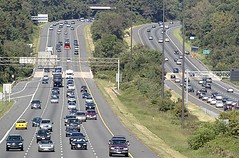 I-95, Howard County, Maryland. Baltimore Sun photo by David Hobby.
I-95, Howard County, Maryland. Baltimore Sun photo by David Hobby.From Brian Wright via the pro-urb e-list, "I have often asked; 'if you are not in favor of New Urbanism, what do you believe in?' My friend Kenny Craft wrote this, and I think that it can provide ananswer for those who are not New Urbanists":
The Congress for the Continuation of Sprawl views disinvestment in central cities, the spread of placeless sprawl, increasing separation by race and income, environmental deterioration, loss of agricultural lands andwilderness, and the erosion of society's built heritage as the preferred method of development in America.
We stand for the deterioration of existing urban centers and towns within incoherent metropolitan regions, the continuation of sprawling suburbs as opposed to communities of real neighborhoods and diverse districts, the destruction of natural environments, and the collapse of our built legacy.
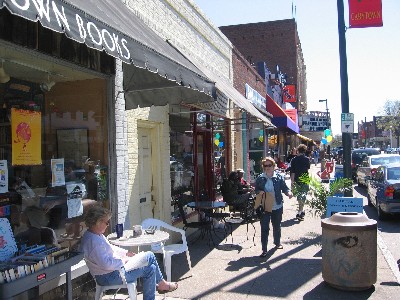 Carytown, Richmond, Virginia, photo by Steve Pinkus. Click here for an uncropped version of this photo.
Carytown, Richmond, Virginia, photo by Steve Pinkus. Click here for an uncropped version of this photo.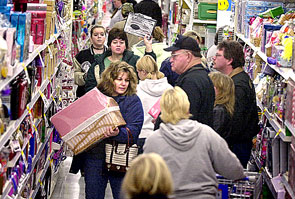 Bargain hunters crowd the aisles at a Wal-Mart store in Wichita, Kan., today. Thousands of shoppers nationwide descended on stores before sunrise to take advantage of post-holiday sales. (AP photo)
Bargain hunters crowd the aisles at a Wal-Mart store in Wichita, Kan., today. Thousands of shoppers nationwide descended on stores before sunrise to take advantage of post-holiday sales. (AP photo)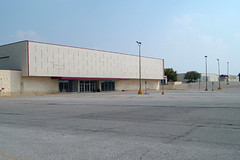 The defunct Eastgate Shopping Center, Indianapolis. www.deadmalls.com
The defunct Eastgate Shopping Center, Indianapolis. www.deadmalls.com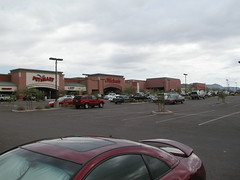 Red Mountain Plaza, Arizona.
Red Mountain Plaza, Arizona.We recognize that our physical solutions may not solve [existing] social and economic problems [and in fact will create new social and economic problems]; neither do we promise long lasting economic vitality, community stability, and environmental health.
We advocate the restructuring of public policy and development practices to support the following principles: neighborhoods should be ethnocentric in use and population; communities should be designed with the automobile in mind, with a lesser emphasis on the pedestrian; cities and towns should be shaped by laissez faire growth and amenities should be sufficiently separated, so as to facilitate reliance on the automobile; sub-urban places should be framed by architecture and landscape design that disregards local history, climate, ecology, and building practice.

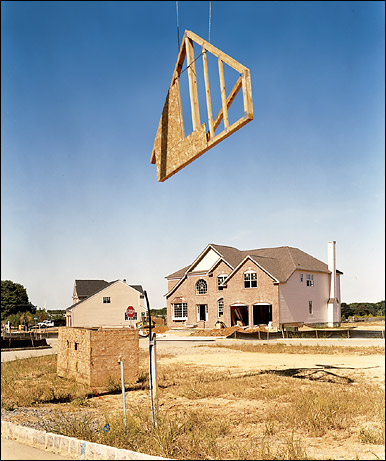 New York Times photo.
New York Times photo. 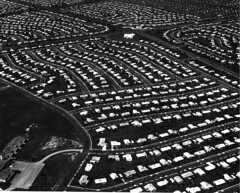 Levitttown, Pennsylvania.
Levitttown, Pennsylvania.We represent a broad-based citizenry [and business community], composed of public and private sector leaders, and multidisciplinary professionals, who are reaping the temporary benefits of sub-urban sprawl. We are committed to clear-cutting forests and replacing them with asphalt and standardized "big box" buildings, to facilitate the loss of local identity and community.
We dedicate ourselves to the decline of our homes, blocks, streets, parks, neighborhoods, districts, towns, cities, regions, and environment.
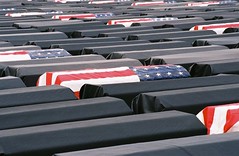 One of the costs of an oil-dependent economy. Dead American military personnel returned from Iraq. Source Unautremonde.
One of the costs of an oil-dependent economy. Dead American military personnel returned from Iraq. Source Unautremonde.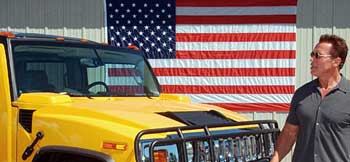 Governor Schwarzenegger and his Hummer.
Governor Schwarzenegger and his Hummer._______________
Follow up:
The Sprawl Manifesto was created by taking an “inverse” of the Charter for the New Urbanism. I took its structure and assertions and “inverted” it. I then took liberty to tweak the language where needed to drive the point through. Beyond the idea and the “tweaking” the credit is due to the Congress for the New Urbanism for its clear articulation of the impact that our actions (or lack of action) and policies can have on our built environment and society.
-- Kenny Craft, C.N.U., LEED – Birmingham, AL
Index Keywords: sprawl; urban-design; car-culture



1 Comments:
Good post it's amazing the knowledge you have in your Niche
Post a Comment
<< Home